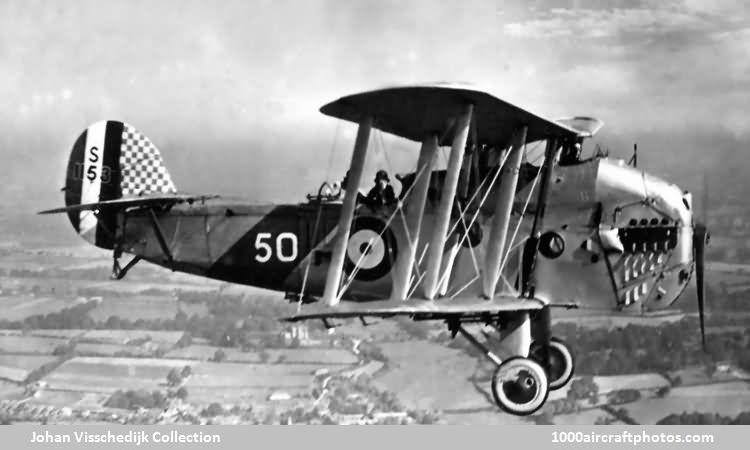Of composite wood and metal structure, covered with fabric, the aircraft was operated by a crew of three or four, and powered by a 450 hp Napier Lion IIB twelve-cylinder liquid-cooled W-engine. Armament consists of one Lewis machine gun on Scarff ring in the rear cockpit and one fixed Vickers machine gun forward. The first of three prototypes Blackburn (s/n N150, N151 and N152) appeared from the factory of the Blackburn Aeroplane & Motor Co. Ltd. in Leeds, Yorkshire in 1920.
In this original version the fuselage connected directly with both upper and lower wings; subsequently the gap between the wings was increased by raising the top wing on struts above the fuselage, and the wing petrol-tanks were eliminated. In this form the Blackburn entered service in 1923 as the Mk.II. In all 63 Blackburns were built: N150 to N152, N9579 to N9590, N9681 to N9686, N9824 to N9835, N9978 to N9989, S1046 to S1057, and S1153 to S1158.
The first unit to be equipped was No. 422 Fleet Spotter Flight, which served first in HMS Eagle with the Mediterranean Fleet and afterwards in HMS Argus on the China Station. In 1926, the Blackburn Blackburn also entered service with No. 420 Fleet Spotter Flight, where it superseded the ageing Westland Walrus, and operated for a time at Gosport before embarking in H.M.S. Furious for duties with the Home Fleet.
In May 1929 the Blackburn flights were redesignated Nos. 450 and 449 Fleet Spotter Reconnaissance Flights respectively: this was part of a general re-organization of spotter flights involving the disbandment of the original Nos. 420, 421, 422 and 423 Flights and the creation of Nos. 440 to 450 Flights inclusive. Blackburns finally disappeared from the Fleet Air Arm in 1931, when both Nos. 449 and 450 Flights re-equipped with Fairey IIIFs.
At least one Blackburn (s/n N9833) was fitted with twin floats and, due to specially strengthened keels, could be landed on a carrier, while some were finished as a side-by-side two-seat dual-control trainer, known to the FAA as the Bull. Contemporary accounts allege that the drag was such with the side-by-side cockpit that the take off run was increased to 1,800 ft (549 m), requiring the whole length of Leuchars aerodrome to get airborne. Once in the air, it took 10 min to reach 1,000 ft (305 m). The Blackburn/Bull were finally declared obsolete in March 1933."
Span: 45 ft 10 in (13.97 m)
Length: 39 ft 0 in (11.89 m)
Height: 16 ft 0 in (4.88 m)
Wing area: 662 sq.ft (61.50 sq.m)
Weight empty: 4,034 lb (1,830 kg)
Loaded weight: 6,112 lb (2,772 kg)
Max speed: 100 mph (161 kmh)
Climb: 650 ft (198 m)/min
Service ceiling: 11,750 ft (3,581 m)
Range: 210 mls (338 km)
